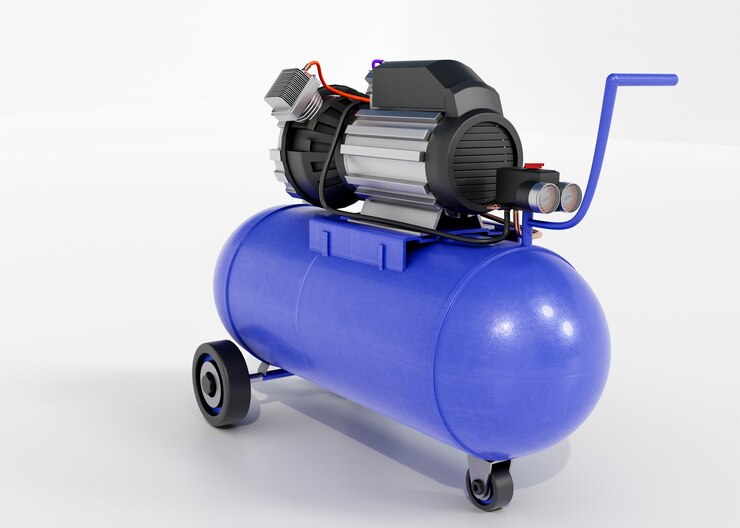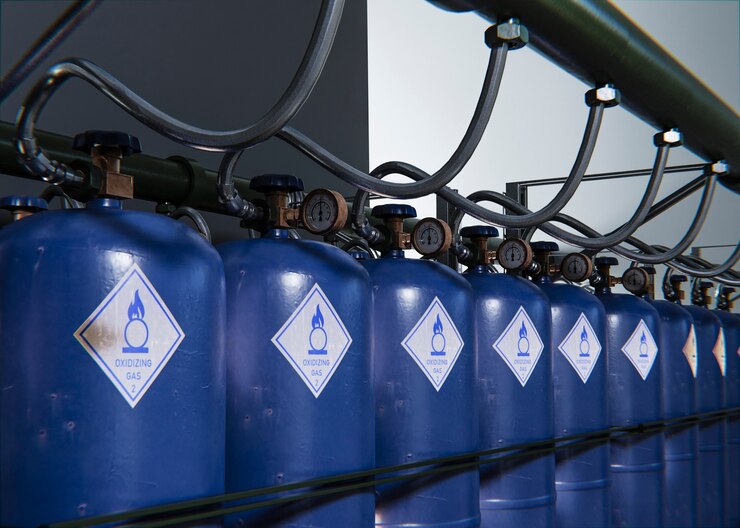Hydrogen Gas Compressor 30 Bar – A Brief Guide(2024)
The world is embracing clean energy and hydrogen gas is taking a leading position in this race. Nevertheless, low density makes the hydrogen occupy a large volume for the relatively small amount of gas which poses a major challenge when it comes to transportation and storage. This calls for hydrogen compression because by compressing it, we can increase its pressure significantly thereby bringing the molecules close together to facilitate better storage and transportation of the same efficiently. In this article, I take an in-depth view of Hydrogen Gas Compressor 30 Bar, which are critical technology pillars in powering the clean energy future.
Why Compress Hydrogen Gas?
Think about filling your car’s fuel tank with an air balloon- that will not get you far! The same case applies to hydrogen gas; its natural state is not dense meaning that much space is required to store a small amount of gas. This makes bulk storage and transport of hydrogen for various applications very difficult. Overcoming these challenges requires:
Increased Storage Capacity
Try squeezing all the air from the beach ball into the soccer ball – that is what mean by compression! By compressing hydrogen molecules together, we can store much more in less space. As such, there is more efficient storage and use of hydrogen gas compressor 30 bar.
Efficient Transportation
Compressed forms of hydrogens like natural gases can be transported by pipelines. This allows delivery of hydrogen at different sites where vehicles are refuelled or buildings powered among others.
Fuel Cell Vehicles
For electric cars driven by fuel cells built inside them, need high pressure due to compression purposes enabling their effective operation thus giving rise to the feasibility of storing or delivering whatever pressures are necessary for those motors.
Types Of Hydrogen Gas Compressor 30 Bar Applications
The most common hydrogen compressors used for 30 bar applications are classified under positive displacement compressors category. They operate by trapping a given volume of compressed hydrogen and then reducing its volume to increase pressure.
Here are some popular types
Reciprocating Compressors
Imagine a syringe. This is how reciprocating compressors work. A piston or diaphragm moves back and forth in a cylinder compressing the trapped hydrogen gas. Recipes are reliable and efficient in hydrogen gas compressor 30 bar applications. They give control over the compression process that is accurate despite having parts moving which means they need more maintenance at shorter intervals when compared to other types.
Rotary Compressors
For these compressors, different parts such as screws or gears rotate within one another hence compressing the gas inside them. Having higher flow rates, rotary compressors offer smoother running than recipes besides being appropriate for large-scale hydrogen applications. However, it may not be as efficient as recipes at attaining 3 Bar and can cause oil pollution if lubricated oil-based systems are used.
Oil-Free Compressors
Some of the applications require maintaining the purity of the gas, particularly in fuel cell vehicles. This concern is addressed by using oil-free compressors which make use of diaphragms or special lubricants that do not contaminate compressed hydrogen gas with oil during the compression process. These are important options whenever purity has to be emphasized application-wise.
Coming Technologies on the Horizon
The future of hydrogen compression in 30 Bar is dominated by reciprocating and rotary compressors, yet it holds various possibilities due to the emergence of new technologies:
Centrifugal Compressors: Imagine a super-fast fan spinning at high speeds. That’s what centrifugal compressors are. For large-scale hydrogen transportation applications, they are very good at achieving high flow rates which is why they are used for this purpose.
However, their focus on high flow rates has limited them from being able to achieve the precise pressure control that is required in all hydrogen gas compressor 30 Bar applications.
Metal Hydride Compressors and Electrochemical Compressors
These methods are still in their infancy stages but promise great things for the future when it comes to hydrogen compression. Metal hydride compressors use special metals which have the unique capability of being able to absorb hydrogen at low pressure and then release it under high pressure again.
This offers a promising alternative to traditional compression methods. In contrast, electrochemical compressors employ electricity and specialized membranes to separate and recombine hydrogen molecules at higher pressure levels. Although these technologies are still in their early stages, they offer many interesting possibilities for future solutions for compressed hydrogen.
Choosing the Best Hydrogen Gas Compressor 30 Bar
When selecting an optimal 30-bar hydrogen gas compressor, one should consider its individual needs or preferences. Some criteria include:
Throughput: This refers to how much hydrogen gas you need per unit of time (e.g., cubic meters per hour).
Compression Ratio: This defines the desired pressure increase, typically from low pressure to the target 30 Bar.
Efficiency: The amount of energy consumed by a compressor while operating becomes very important here because more efficient compressors result in lower operating costs.
Take into account not only initial acquisition outlays for procurement of a compressor but also ongoing support expenditures linked with it.
Application: What you will want it for? Do you need a portable compressor that could be used in mobile fueling stations or a stationary one to serve in large-scale hydrogen production facilities? Is it necessary to have oil-free operations such as those needed for hydrogen fueling of fuel cell vehicles?
Safety Measures for Hydrogen Gas Compressors
Hydrogen gas is clean, yet combustible and explosive. It is, thus, crucial to prioritize safety while selecting, operating, and maintaining compressors handling hydrogen gas. The following are some important safety considerations:
Leak Detection and Prevention
Even small leaks of hydrogen gas can pose a significant safety risk. This necessitates reliable leak detection systems and preventative maintenance practices to maintain the integrity of the compressor system.
Material Compatibility
All materials in the compression system – from piping to valves – must be compatible with hydrogen gas. Materials that do not go well together may undergo degradation or react with hydrogen resulting in leaks and possible hazards related to safety.
Pressure Relief Valves
In emergencies, excess pressure should be relieved using safety relief valves. To avoid accidents arising from uncontrolled pressure increase, it is important therefore to select proper valves as well as install and maintain them correctly.
Operator Training
Full training is required for operators responsible for operating and servicing any equipment generating compressed hydrogen gas. Specifically designed course content should cover safe operating procedures, emergency response protocols as well as appropriate maintenance techniques specific to this type of equipment.
The Future of Hydrogen Gas Compression
Hydrogen gas compressor 30 bar is a key technology for making clean energy possible. Thirty Bar compressors are widely used in various applications such as fueling hydrogen fuel cell vehicles, providing electricity to buildings and storing renewable sources of power like wind and solar energy. With the evolution of technology, we will continue to witness new and more efficient ways of compressing hydrogen.
Metal hydride and electrochemical compressors show high potential for driving the future of hydrogen compression. Therefore, by considering aspects regarding compressor selection, safety concerns and technological improvements; hydrogen gas compression can be an important driver towards a better planet.
Conclusion
In conclusion, a hydrogen gas compressor 30 bar is an important bridgehead toward a clean energy future. Being able to store and transport hydrogen gas efficiently makes 30 Bar compressors instrumental in turning it into a primary source of clean energy on a global scale.
Lastly, the use of hydrogen gas extends from vehicles to home heating systems and commercial establishments thus becoming wider every day. This means that there will soon be more sophisticated methods that are more effective in terms of size for instance metal hydride-based or electrochemical compressors among others.
By putting safety first, selecting appropriate compressors for individual cases, and embracing technical progress; hydro-compression can revolutionize our power procurement system.
Read more: Hydrogen Mix Screw Compressor: Complete Guide 2024



